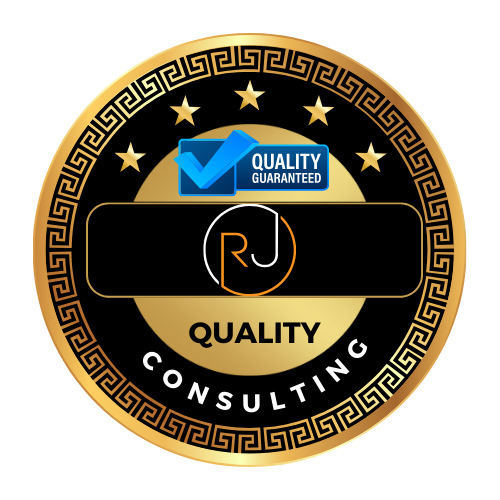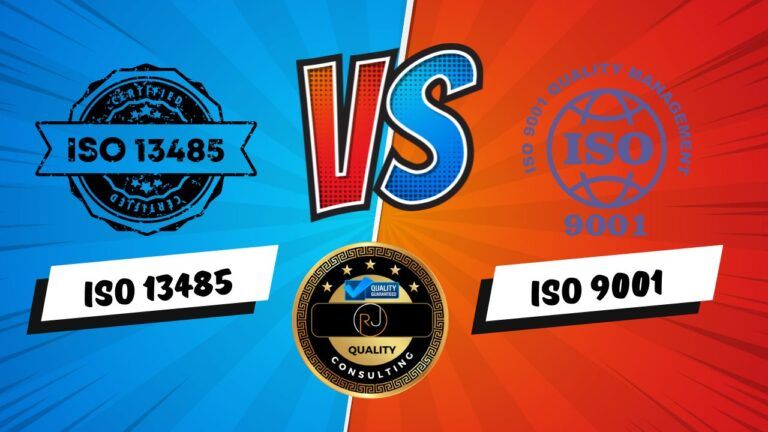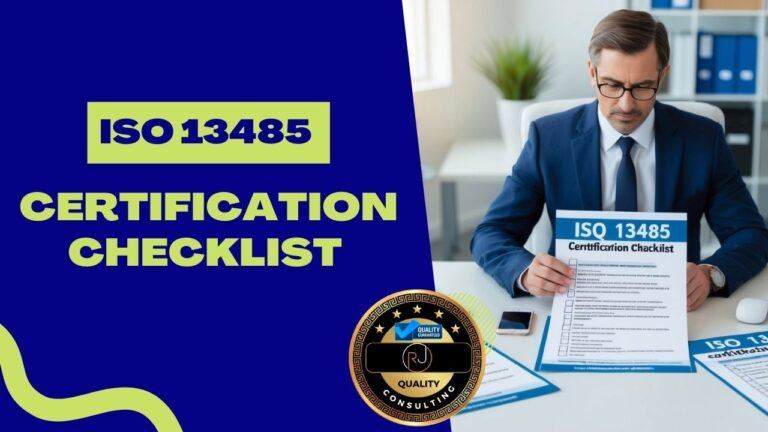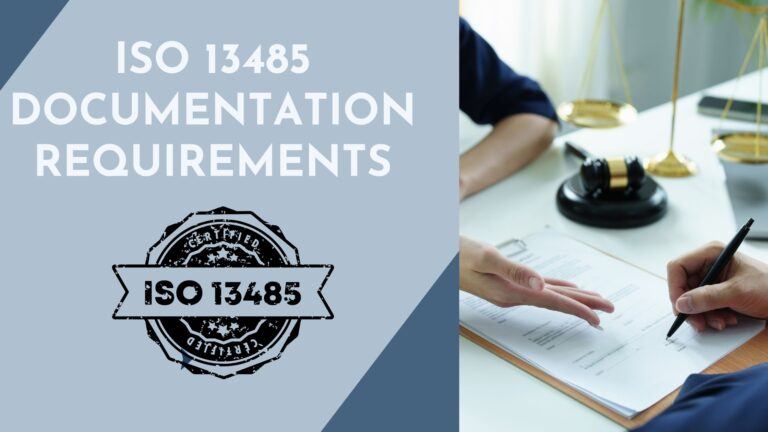ISO 13485 Implementation Guide: Essential Steps for Medical Device Quality Management
Utilizing an ISO 13485 implementation guide is a crucial resource for medical device companies looking to enhance their quality management systems. ISO 13485 provides a comprehensive framework to ensure that products consistently meet customer and regulatory requirements. By implementing this standard, companies can improve processes, reduce risks, and ensure the safety and effectiveness of their medical devices.
This ISO 13485 implementation guide will walk you through the key steps, including understanding the standard’s requirements, conducting a gap analysis, developing an implementation plan, training employees, performing internal audits, and preparing for certification. Following this guide will help your organization achieve compliance with ISO 13485, gain a competitive edge in the market, and foster trust among stakeholders, including patients, healthcare providers, and regulatory authorities.

Implementing ISO 13485 involves several stages, from understanding the standard to developing processes and procedures. You’ll need to assess your current system, identify gaps, utilize an ISO 13485 certification checklist, and create an action plan to address them. This process requires commitment from top management and involvement from all levels of the organization.
As you begin your ISO 13485 implementation journey, keep in mind that it’s not just about getting certified. It’s about creating a culture of quality that permeates every aspect of your business. This guide will help you navigate the complexities of the standard and set you on the path to success.
Key Takeaways
- ISO 13485 implementation enhances product safety and regulatory compliance
- The process requires commitment from all levels of the organization
- Successful implementation creates a culture of quality throughout the business
Overview of ISO 13485

ISO 13485 is an international standard for quality management systems in the medical device industry. It sets requirements for organizations involved in the design, production, installation, and servicing of medical devices.
Significance and Scope
ISO 13485 helps medical device companies create safe and effective products. It covers all stages of a product’s lifecycle, from design to post-market surveillance. The standard applies to manufacturers, suppliers, and service providers in the medical device field.
Key areas include:
- Risk management
- Design control
- Process validation
- Complaint handling
- Regulatory compliance
By following ISO 13485, you can improve product quality, meet legal requirements, and boost customer satisfaction. The standard is flexible, allowing you to tailor it to your specific needs and regulatory environment.
Compatibility with Other Management Systems
ISO 13485 aligns with other management system standards, making integration easier. It shares common elements with ISO 9001, the general quality management standard. This allows you to build on existing systems if you already use ISO 9001.
Some key differences include:
- More focus on regulatory compliance
- Stricter document control
- Enhanced risk management
You can also integrate ISO 13485 with standards like:
- ISO 14971 for risk management
- ISO 27001 for information security
- ISO 45001 for occupational health and safety
This integrated approach can streamline your operations and reduce duplication of efforts.
Regulatory Context
ISO 13485 helps you meet regulatory requirements in different markets. Many countries accept it as a basis for their own medical device regulations. For example, the European Union recognizes ISO 13485 certification as part of CE marking.
In the United States, the FDA’s Quality System Regulation (21 CFR Part 820) has many similarities with ISO 13485. While not identical, following ISO 13485 can help you comply with FDA requirements.
Other countries like Canada, Japan, and Australia also recognize ISO 13485. This makes it easier for you to enter global markets. By implementing ISO 13485, you create a strong foundation for meeting various regulatory demands worldwide.
Quality Management System

ISO 13485 requires a robust quality management system (QMS) for medical device companies. A well-designed QMS helps ensure product safety and effectiveness. It also aids in meeting regulatory requirements across different markets.
General Requirements
Your QMS must cover all aspects of medical device production. This includes design, manufacturing, and post-market activities. You need to identify and document key processes. These processes should work together smoothly.
Set clear quality objectives. Make sure your staff understands their roles in achieving these goals. Regular training is crucial.
Use a risk-based approach. This means focusing more attention on higher-risk areas of your business. Keep track of any changes that could affect product quality.
Regularly review your QMS. Look for ways to improve it. This might involve updating processes or adding new controls.
Documentation Requirements
Your QMS documentation is critical. It proves you’re following proper procedures. Key documents include:
- Quality manual
- Standard operating procedures (SOPs)
- Work instructions
- Forms and records
Keep your documentation clear and easy to understand. Use simple language and avoid jargon. Make sure all documents are up-to-date and easily accessible to staff who need them.
Create a system for document control. This includes:
- Approving documents before use
- Reviewing and updating as needed
- Marking outdated versions
- Keeping records of changes
Electronic document systems can help manage this process. They make it easier to track versions and control access.
Management Responsibility

Management plays a key role in ISO 13485 implementation. Their commitment and actions set the tone for the entire quality management system. Let’s look at the main areas of management responsibility.
Management Commitment
Top leaders must show their dedication to quality. They need to:
- Set quality goals
- Make sure resources are available
- Review the system regularly
- Follow laws and rules
Leaders should talk about quality often. They can do this in meetings, emails, and company updates. Their actions must match their words. When managers prioritize quality, employees will too.
Customer Focus
Putting customers first is crucial. Managers should:
- Find out what customers need
- Meet customer requirements
- Track customer satisfaction
- Act on customer feedback
You can use surveys, interviews, and complaint data to understand customers better. Make sure to share this info with your team. Use it to improve products and services.
Quality Policy
Your quality policy is a short statement about your quality goals. It should:
- Fit your company’s purpose
- Include a commitment to meet requirements
- Promise to keep improving
- Be easy to understand
- Be known by all staff
Review and update your policy regularly. Make sure it’s posted where everyone can see it. Talk about it in meetings and training sessions.
Planning
Good planning helps you reach your quality goals. You should:
- Set clear, measurable objectives
- Make plans to meet these objectives
- Ensure your QMS stays intact when changes happen
Break big goals into smaller tasks. Assign responsibilities and deadlines. Use project management tools to track progress.
Responsibility, Authority, and Communication
Everyone needs to know their role in the QMS. You should:
- Define and document job roles
- Appoint a management rep for the QMS
- Set up ways to communicate about quality
Create clear job descriptions. Use org charts to show reporting lines. Hold regular meetings to discuss quality issues. Set up a system for sharing important updates.
Management Review
Regular reviews help keep your QMS on track. In these reviews, you should:
- Look at audit results
- Check customer feedback
- Review process performance and product conformity
- Look at the status of preventive and corrective actions
- Follow up on past review actions
- Plan for changes that could affect the QMS
- Make recommendations for improvement
Schedule reviews at set times. Keep good records of what’s discussed and decided. Make sure to follow up on action items from each review.
Resource Management

Resource management is key to implementing ISO 13485 effectively. It covers the people, equipment, and environment needed for your quality management system.
Provision of Resources
You need to give your quality management system the right resources. This means money, people, and equipment. Make sure you have enough to meet ISO 13485 rules and keep customers happy.
Look at what you have now. Figure out what else you need. Plan how to get those resources. Keep checking if you have enough as time goes on.
Set up a way to ask for more resources when needed. This helps you react fast to changes or new needs.
Human Resources
Your staff is crucial for ISO 13485. You need people with the right skills and knowledge.
Make a list of needed skills for each job. Hire people who fit these needs. Train your staff to keep their skills up to date.
Keep records of training and skills. This proves your team can do their jobs well.
Set up ways to check if training works. Use tests or on-the-job watching. Fix any gaps you find.
Infrastructure
Your workspace and tools matter for ISO 13485. You need the right setup to make safe, good products.
Check what buildings, machines, and software you have. Make sure they fit ISO 13485 rules. Fix or update anything that doesn’t work well.
Set up a plan to take care of your tools and workspace. Do regular checks and fixes. This keeps everything working right.
Think about how your workspace affects product quality. Make changes if needed to improve things.
Work Environment and Contamination Control
Your work area needs to be clean and safe. This helps make good products and keeps workers healthy.
Set rules for cleanliness and safety. Train workers on these rules. Do regular checks to make sure rules are followed.
Control things like temperature, humidity, and dust. These can affect product quality. Use the right tools to measure and control these factors.
Set up ways to stop contamination. Use clean rooms if needed. Have rules for how to dress and act in clean areas.
Make a plan to deal with any contamination that happens. This helps you fix problems fast and stop them from getting worse.
Product Realization

Product realization covers the steps to design, develop, and deliver medical devices. It includes planning, customer focus, design work, purchasing, production, and equipment control. These areas help ensure quality throughout the product lifecycle.
Planning of Product Realization
Planning lays the foundation for creating quality medical devices. You need to set clear goals and map out the steps to achieve them. This includes:
- Defining quality objectives for the product
- Creating processes and documents
- Setting up needed resources
- Planning verification, validation, and testing activities
Make a project plan that covers all stages from design to delivery. Update it as you go to keep everything on track.
Customer-Related Processes
Understanding and meeting customer needs is key. You should:
- Review product requirements before committing to supply
- Communicate clearly with customers
- Handle feedback and complaints properly
Set up a system to gather and analyze customer input. Use this info to improve your products and processes. Make sure you can meet all stated requirements before accepting orders.
Design and Development
Good design is crucial for safe, effective medical devices. Your design process should include:
- Planning design stages and reviews
- Defining inputs like user needs and regulations
- Creating detailed design outputs
- Doing thorough design verification and validation
Document all design changes. Keep records of your design process to show you followed proper procedures.
Purchasing
Quality starts with good materials and services. To manage purchasing:
- Evaluate and select suppliers carefully
- Clearly specify purchasing requirements
- Verify purchased products meet specifications
Set up a supplier rating system. Monitor supplier performance over time. Have a process to handle any issues with purchased items.
Production and Service Provision
Controlled production ensures consistent quality. Key aspects include:
- Having clear work instructions
- Using suitable equipment
- Monitoring and measuring processes
- Implementing product identification and traceability
- Properly handling and storing products
Validate any processes where output can’t be fully verified. Keep detailed production records. Have systems to prevent mix-ups or contamination.
Control of Monitoring and Measuring Equipment
Accurate measurements are vital for quality control. To manage test equipment:
- Calibrate or verify equipment at set intervals
- Protect equipment from damage and tampering
- Keep records of calibration results
- Assess the impact of out-of-spec equipment on previous results
Label equipment to show calibration status. Only let trained staff handle test equipment. Have backup plans for critical measuring devices.
Measurement, Analysis, and Improvement

Effective measurement and analysis are key to improving your medical device quality management system. You’ll need to set up processes to monitor, measure, analyze and enhance your QMS performance.
General
You must plan and put in place the monitoring, measurement, and analysis needed to show your products meet requirements. This includes deciding what to measure, the methods to use, and when to do it. You’ll need to track both product and process metrics.
Set up a system to gather and record relevant data. Make sure you have the tools and resources needed to carry out these activities. Keep records of the results as proof of your monitoring efforts.
Don’t forget to measure customer satisfaction too. Use surveys, complaints data, and other feedback to gauge how well you’re meeting customer needs.
Monitoring and Measurement
You’ll need to monitor several key areas:
- Customer feedback
- Internal audit results
- Process performance
- Product conformity
Use appropriate statistical techniques to analyze your data. This could include control charts, histograms, or capability studies.
For processes, track metrics like yield, cycle time, and defect rates. For products, measure critical quality attributes against specifications.
Set up equipment calibration schedules to ensure accurate measurements. Train staff on proper monitoring techniques.
Review your monitoring methods regularly. Update them as needed to keep them effective.
Control of Nonconforming Product
You must have a process to identify and control products that don’t meet requirements. This prevents their unintended use or delivery.
Key steps include:
- Identifying the nonconformity
- Documenting it
- Evaluating its impact
- Segregating affected products
- Deciding on actions to take
Possible actions are:
- Rework to meet specs
- Accept with customer approval
- Reject and scrap
Keep records of nonconformities and any actions taken. Use this data to spot trends and improve your processes.
Train staff to recognize and report nonconforming products promptly.
Analysis of Data
Collect and analyze data from your monitoring activities. This helps you assess how well your QMS is working and where you can improve.
Key areas to analyze:
- Customer satisfaction trends
- Product conformity rates
- Process performance metrics
- Supplier quality data
Use statistical tools to spot patterns and trends in your data. Look for both positive and negative shifts over time.
Present data visually using charts and graphs where possible. This makes it easier to understand and share with others.
Use your analysis to make informed decisions about where to focus improvement efforts.
Improvement
Use the results of your measurement and analysis to drive ongoing improvement. This includes:
- Taking action to fix problems
- Preventing issues from happening again
- Enhancing product quality
- Making processes more efficient
Use tools like corrective and preventive action (CAPA) to address identified issues. Document these actions and verify they’re effective.
Set improvement goals and track progress towards them. Celebrate successes to keep staff motivated.
Encourage employees to suggest improvements. Create a system to review and implement good ideas.
Remember, improvement is an ongoing process. Keep looking for ways to enhance your QMS and product quality.
Frequently Asked Questions

ISO 13485 implementation involves key steps, timelines, documentation, and best practices. Companies often face challenges but can benefit from a process approach. Here are answers to common questions about implementing this medical device quality standard.
What are the steps involved in implementing ISO 13485 for medical devices?
- Review the ISO 13485 standard.
- Assess your current quality system.
- Create an implementation plan.
- Develop required documentation.
- Train staff on new procedures.
- Conduct internal audits.
- Fix any issues found.
- Get certified by an accredited body.
How long is the typical timeline for ISO 13485 implementation from start to certification?
The timeline varies based on company size and current systems. Small companies may take 6-12 months, while larger firms often need 12-18 months. Some key factors affecting time include the current quality system status, staff resources available, management commitment, and complexity of products.
What are the key documentation requirements for ISO 13485 compliance?
You need to create and maintain:
- Quality manual
- Quality policy
- Quality objectives
- Documented procedures
- Work instructions
- Forms and records
- Device master records
- Design and development files
Keep documents clear and easy to use. Update them as needed.
How does a process approach benefit ISO 13485 Quality Management System?
A process approach helps you:
- Identify key processes
- Define inputs and outputs
- Measure process performance
- Find areas for improvement
- Ensure consistent product quality
This approach links different parts of your system. It helps you meet customer and regulatory needs better.
What are the common challenges faced during the implementation of ISO 13485?
- Lack of management support
- Resistance to change from staff
- Limited resources (time, money, people)
- Complex documentation requirements
- Difficulty interpreting the standard
- Balancing compliance with efficiency
Address these early to smooth your implementation process.
What are the best practices for maintaining ISO 13485 compliance post-certification?
- Conduct regular internal audits
- Keep training staff on the system
- Review and update documents often
- Monitor key performance indicators
- Address non-conformities quickly
- Stay updated on regulatory changes
- Continuously improve processes
Make quality a part of daily operations.






